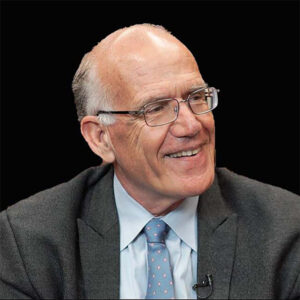 The Westlands Water District held its board of directors meeting was held Tuesday, August 17, 2021, at its Fresno headquarters. The meeting was in person. General Manager Tom Birmingham announced this is the first hybrid meeting with Zoom available and he wanted to let everyone know that the meeting will be conducted with that in mind so folks online can participate. Also Director William Bourdeau has been exposed to the cooties from over the ocean so he’s participating by Zoom.
The Westlands Water District held its board of directors meeting was held Tuesday, August 17, 2021, at its Fresno headquarters. The meeting was in person. General Manager Tom Birmingham announced this is the first hybrid meeting with Zoom available and he wanted to let everyone know that the meeting will be conducted with that in mind so folks online can participate. Also Director William Bourdeau has been exposed to the cooties from over the ocean so he’s participating by Zoom.
The Hearing
Chairman Ryan Ferguson called the meeting to order at 1:04pm and the first thing they did was go into a hearing on proposed water rates, charges and land-based charges. A packet wasn’t available for me but it was a chunk of change but Westlands is the biggest water district in America. WWD Controller Bobbie Ormonde gave the board the lowdown and presented the charges and delinquent penalties. Ormonde said the district has only received one protest so far by mail. There were no other protests in person or online. Director Frank Coelho asked about some fine point regarding the distribution of water’s impact. Birmingham recommended the notice and the protest to be included in the record. The board approved the resolution adopting rates and charges.
did was go into a hearing on proposed water rates, charges and land-based charges. A packet wasn’t available for me but it was a chunk of change but Westlands is the biggest water district in America. WWD Controller Bobbie Ormonde gave the board the lowdown and presented the charges and delinquent penalties. Ormonde said the district has only received one protest so far by mail. There were no other protests in person or online. Director Frank Coelho asked about some fine point regarding the distribution of water’s impact. Birmingham recommended the notice and the protest to be included in the record. The board approved the resolution adopting rates and charges.
The Meeting
Next the open session of the directors meeting began at 1:16pm. There were no additions or corrections to the agenda, the minutes were approved and that took care of the housekeeping.
GM’s Report
Birmingham asked Deputy GM Resources Russ Freeman to report on water supplies. Freeman said WWD has 177,000 a/f in supplies and that should almost double after transfers come in. If I’m reading the chart right WWD used 62,000 a/f last month. The bulk of the district’s Sacramento Valley transfers, about 90,000 a/f will move in October. Coelho asked how many late requests have shown up and Freeman said while he didn’t have that number but the timely requests are filled first.
Tom Boardman said the US Bureau of Reclamation is almost at its original carryover target at Shasta although the State Board is pushing them hard. Boardman said he thinks most of the transfer water will be released in October with maybe a little in September. The American River contractors are pushing the Bureau on maximizing carryover at Folsom. This will also bring some relief. He said the June and July Delta targets were tough to meet but the standards are lower at this time due to relaxed outflow requirements. He said the federal Jones Plant is at one unit and the state plant is as low as it can go at this time. The federal share of San Luis Reservoir shows a negative 15,000 a/f. But there has been a 50,000 a/f transfer to the feds by the state so it’s more like a negative 65,000 a/f. However, federal demands have dropped to 1,000 cfs per day. He sees the negative share to approach over 100,000 a/f by the time it’s all over.
Bourdeau asked Freeman about the risks of moving the transfers. He said there isn’t a big risk at this time. Birmingham said if the plants broke down or there was some huge rain event that could take up capacity are the risks. He added the fishy folks believe it might be better to move water earlier in the year so that might happen. He also said the COA agreements are on hold this year as it’s so dry. But there will be a sit down between the state and the feds to true that up.
Director Kevin Assemi said the negative projection of COA will reduce the SLR debt. Birmingham said the COA debt has never been paid at SLR with a transfer. He said this year might be calculated by the State Board to allow this but the state contractors won’t like it.
Gov’t Stuff
Shelly Cartwright reported from Washington DC the Senate passed an infrastructure bill recently and it will go to the House. Speaker Pelosi said she won’t allow it to be heard until the even porkier reconciliation bill is put forth as well. There were some Demos including Rep. Jim Costa who sent her a letter saying this isn’t right. It sounded like Pelosi backed down but tried to make it sound like she didn’t.
On the state side state Senator Melissa Hurtado is holding a press conference tomorrow at San Luis Reservoir. Why don’t my friends tell me these things? The event is to commemorate President John Kennedy’s dedicating the facility 60-years ago. Good for her.
Birmingham reported he and others met with Congressmen Bruce Westerman and David Valadao at the WWD Five Points office. They were going to tour Director Stan Nunn’s farm but the schedule didn’t allow. I happen to know that Nunn worked really hard to clean his place up above its usual. But he took the missed tour in good humor.
Other Agency Activities
Bourdeau said the Family Farm Alliance has been monitoring the infrastructure bill and he’s real proud of FFA. Freeman reported San Luis Delta Mendota Water Authority is working on the SLR Dam improvements. Ferguson reported ACWA is getting ready to elect new representatives.
Water Policy
Freeman reported there are two proposed amendments to the Criteria for Article Two of the benefits to non-irrigable lands in the district. I think this is a policy to cover how the water allocations that would go to land that is temporarily fallowed can be saved to the district. Director Daniel Errotabere asked about weeds and he wants to be sure the fallowed land is not a problem to the neighbors. That seems to have been taken into consideration and the board agreed to add the amendments. Birmingham added he appreciated how much help and work the landowner put into these amendments.
Next, the board considered the execution of the SLDMWA plans for the Los Vaqueros Reservoir project to increase storage and conveyance. COO Jose Gutierez reported WWD approved such an agreement and it needs to sign another amendment for funding through 2022. This will help get the JPA formed and it will take over a lot of this type of agreements so it won’t go through SLDMWA anymore. WWD’s share of the $6 million cost is about $200,000. I think WWD is one of four SLDMWA members who have entered into these agreements. Gutierez said there are off ramps available to the members if they decide to bail on the deal. He said staff recommends continuing the agreement at this time but this will not bind the district for any long-term agreement.
There were two ladies from the Los Vaqueros group who said state and federal funding looks pretty good. Bourdeau said he was in favor of the project but would like to see a cost/benefit analysis first. The board approved with Bourdeau the lone nay vote.
Director Todd Neves had to table item 9.c. because DWR wasn’t providing the needed support for a 30,000 a/f slug of water by not waiving CEQA. Assemi spoke up saying it may be time to poke the bear. He was pretty adamant about this and I found it refreshing to hear someone from the board level speak out when the government fails in doing the right thing instead of being the poser. The television in the boardroom broke and the meeting paused. Which is too bad because there was some real momentum of positive energy. However, I did get to speak with the Deputy General Counsel Tommi Saghatelian briefly and that was cool. We know a bunch of the same people. I believe I spelled her name correctly, if not please let me know.
SGMA
WWD Engineer Kitty Campbell reported on SGMA but before she could work up a good head of steam the John Harris spoke up and told us his video cut out. He was viewing from somewhere besides here. It was mentioned WWD’s IT guy Jim earned his paycheck this afternoon. He was hustling and I’m sorry I didn’t catch his last name.
head of steam the John Harris spoke up and told us his video cut out. He was viewing from somewhere besides here. It was mentioned WWD’s IT guy Jim earned his paycheck this afternoon. He was hustling and I’m sorry I didn’t catch his last name.
Anyway Campbell told the board staff recommends the board approve the draft rules and regulations that support the implementation of the Westside Subbasin Groundwater Sustainability Plan. Campbell listed many of the benefits and flexibility contained in the GSP for Westland growers. There was a lot of information given, more than I could type. But my impression was WWD is pumping less in this drought time than the last. Birmingham said the policies and procedures in a GSP are exempt from CEQA. Campbell said the modeling never exceeded 1.3 a/f per gross acres. There were three options presented and Nunn wanted to know how the aggregate stacks up against future trends that would not allow more than 708,000 a/f of annual groundwater extraction. Neves said he felt Option One is the best. It would give folks a chance to determine how many acres of tomatoes to plant for example.
Director Jim Anderson said if 2022 is another dry year there’s a good chance folks will fire up the pumps earlier and longer. Ferguson said he wasn’t sure of that would happen. He said a lot of the growers he’s talking with are looking to reduce plantings. Bourdeau said he doesn’t see SGMA working without surface deliveries and limiting pumping too much will regulate growers out of business. Nunn said he sees less acreage planted in response to the situation. Assemi said he thinks a 1.3 a/f limit for pumping as a voluntary cap could set up the GSP as not sufficient to a DWR review. Errotabere asked about Madera County working with a water trading through 2022.

Grower Kristy Robinson asked how the different options impacted wells serving more than one property. I wasn’t sure of Campbell’s response but Ms. Robinson is smarter than I am. Grower John Reiter said any option needs a safety valve for pumping if there is another zero allocation next year. Grower Daniel Hartwig said the option that doesn’t allow a safety valve is not a good option for the growers. Grower John Harris asked if this GSP could be legally a taking. WWD counsel John Rubin said he doesn’t believe that is a result. Harris asked if that was a legal opinion and Rubin said he couldn’t answer this on the spot. Amanda Monaco of the Leadership Council said her group is in favor of Option Three as the two other options don’t protect drinking water and won’t get the GSA sustainable. She is also concerned groundwater marketing would consolidate ownership in a smaller and smaller group of hands. Grower Mike Henry liked Option Two for its benefits to growers within the subsidence prone areas. A lot of people felt Option One was a better bridge between the current conditions and the fuller implementation of the GSP.
Coelho said he felt Option One is the best transition and should only be for a short time. Assemi said he felt Option Two with the deferral but he would like to put deadlines for remote well monitoring to show progress. This will also allow better collection of data and be a tool for the future. He said it is important to give staff the resources needed and support the growers. It sounded like Assemi was in favor of Option One with modifications. Director Ceil Howe III asked if there is a wet year next year would there be a way for recharge credits be counted and Campbell said yes there is. The board voted for Option One.
Finance & Admin
Ormonde said the conflict of interest code needed to be adopted and the board adopted Article 13. Good for them. The board was also asked to approve the revised 2021-2022 rates and charges. Since the allocation was so very small there was no real income as planned. The board agreed. The board also agreed to pay $15,000 for the new audio visual system that can be moved if they ever build a bigger boardroom. There is a nonprofit named the California Foundation on the Environment & the Economy and for only $10,500 membership fee WWD can have a board member. Birmingham said he’s been invited to participate in a number of CFEE tours and programs. Should WWD agree to join, Birmingham would be invited to join the CFEE board. He said it is engaged in a very active level with the members of the legislature and provides details policy discussions without the lobbying. He said the access to elected officials not usually available to the Valley is one of the big benefits. I have to say it sounded good to me. Bourdeau said he agrees with
Article 13. Good for them. The board was also asked to approve the revised 2021-2022 rates and charges. Since the allocation was so very small there was no real income as planned. The board agreed. The board also agreed to pay $15,000 for the new audio visual system that can be moved if they ever build a bigger boardroom. There is a nonprofit named the California Foundation on the Environment & the Economy and for only $10,500 membership fee WWD can have a board member. Birmingham said he’s been invited to participate in a number of CFEE tours and programs. Should WWD agree to join, Birmingham would be invited to join the CFEE board. He said it is engaged in a very active level with the members of the legislature and provides details policy discussions without the lobbying. He said the access to elected officials not usually available to the Valley is one of the big benefits. I have to say it sounded good to me. Bourdeau said he agrees with Birmingham and believes WWD will benefit. The board agreed. The board also approved paying its bills. The last open session item was a report by Ormonde on the district’s investments and financial statements. The board approved the report. Good for her.
Birmingham and believes WWD will benefit. The board agreed. The board also approved paying its bills. The last open session item was a report by Ormonde on the district’s investments and financial statements. The board approved the report. Good for her.
Public Comment & Closed Session
Public comment was next. I told the board I appreciated the district installing a better audio visual system. Brandon Herreman of Congressman Valadao’s office thanked WWD for helping with the recent Valley visit by Congressman Westerman. Birmingham said he really appreciated Valadao’s bringing Westerman to the Valley. He said that is the kind of help we need. It looked like the closed session items were all the usual negotiations and lawsuits real and imagined. The meeting adjourned into closed session at 3:50pm or so. And that was that.
DISCLAIMER OF RESPONSIBILITY; Waterwrights strives to provide clients with the most complete, up-to-date, and accurate information available. Nevertheless, Waterwrights does not serve as a guarantor of the accuracy or completeness of the information provided, and specifically disclaims any and all responsibility for information that is not accurate, up-to-date, or complete. Waterwrights’ clients therefore rely on the accuracy, completeness and timeliness of information from Waterwrights entirely at their own risk. The opinions expressed in this report are those of the author and do not represent any advertisers or third parties.
ALL RIGHTS RESERVED. Copyright 2021 by WaterWrights.net/DAW
Westlands Water District
3130 N. Fresno Street, Fresno CA 93703 Phone:559/224-1523
Board: Ryan Ferguson -President, Frank Coelho Jr. – Vice President, Jim Anderson, William Bourdeau, Kevin Assemi, Ceil Howe III, Daniel Errotabere, Stan Nunn & Todd Neves.
Staff: Tom Birmingham-General Manager, Jon Rubin-Attorney, Jose Gutierrez-COO, Russ Freeman-Deputy GM Resources, Shelly Cartwright-Associate GM Water Policy/ Public Affairs Representative, Kitty Campbell-Supervisor of Resources, Bobbie Ormonde-VP of Finance & Administrative Affairs
About: Without irrigation, farming in the Westlands area of California would be limited and ineffectual. The history of Westlands is one of continual adaptation, careful water stewardship and advanced technology. By maintaining a fierce commitment to sustainability, the Westlands’ comprehensive water supply system continues to adapt, educate, and surpass conservation goals. Throughout its history, Westlands Water District has demonstrated a lasting dedication to water conservation and recognized that the long-term survival of its farms depends on the effective management of California’s precious water resources. From www.wwd.ca.gov

































